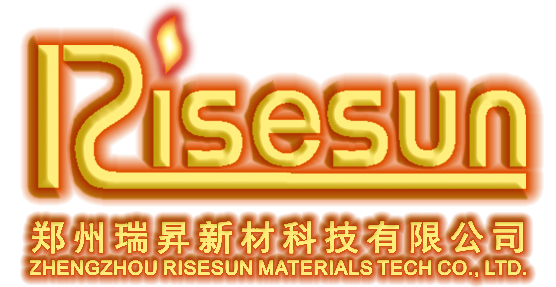11
2025
-
05
Understanding SiC Heating Elements: The Future of Thermal Technology
Silicon carbide (SiC) heating elements are emerging as a pivotal technology in the field of thermal management and high-temperature applications. Known for their exceptional thermal conductivity and high-temperature resistance, SiC heating elements are increasingly favored in various industries due to their efficiency and durability. One of the primary advantages of SiC heating elements is their a
Silicon carbide (SiC) heating elements are emerging as a pivotal technology in the field of thermal management and high-temperature applications. Known for their exceptional thermal conductivity and high-temperature resistance, SiC heating elements are increasingly favored in various industries due to their efficiency and durability.
One of the primary advantages of SiC heating elements is their ability to operate at significantly higher temperatures compared to traditional heating elements. While conventional materials may begin to degrade at elevated temperatures, SiC can sustain operational conditions exceeding 1600°C. This characteristic makes them ideal for applications in metallurgy, ceramics, and high-temperature processing, where precise temperature control is vital.
Another important feature of SiC heating elements is their resistance to oxidation and corrosion. Unlike other heating elements, which can deteriorate over time due to exposure to harsh environments, SiC elements maintain their integrity, resulting in longer service life and reduced maintenance costs. This property is particularly beneficial in industries where chemical exposure is a concern, ensuring that the heating elements remain functional under challenging conditions.
SiC heating elements also offer rapid heating capabilities. Their efficient thermal conductivity allows for quick heat-up times, which is crucial in processes that demand immediate temperature changes. This not only enhances productivity but also contributes to energy savings, as less time is required to reach desired temperatures.
In terms of energy efficiency, SiC heating elements exhibit lower energy consumption compared to traditional materials. Their ability to generate and maintain high temperatures with minimal energy loss makes them an environmentally friendly choice, aligning with global sustainability goals. The reduced energy footprint is an attractive feature for companies looking to minimize their operational costs while adhering to eco-friendly practices.
Moreover, SiC is a semiconductor material, which opens up possibilities for advanced control systems. Integration with modern smart technologies can facilitate precise temperature regulation and monitoring, further enhancing the efficiency of heating processes. This adaptability makes SiC heating elements suitable for a range of applications, from industrial heating systems to laboratory research.
In summary, SiC heating elements represent a significant advancement in heating technology. Their ability to withstand high temperatures, resist corrosion, and operate efficiently makes them a valuable asset for various industries. As the demand for high-performance heating solutions continues to grow, understanding the properties and benefits of SiC heating elements can help professionals make informed decisions about their thermal management needs. Embracing this innovative technology can lead to increased efficiency, reduced costs, and a more sustainable operational approach in the electrical and heating equipment sector.
One of the primary advantages of SiC heating elements is their ability to operate at significantly higher temperatures compared to traditional heating elements. While conventional materials may begin to degrade at elevated temperatures, SiC can sustain operational conditions exceeding 1600°C. This characteristic makes them ideal for applications in metallurgy, ceramics, and high-temperature processing, where precise temperature control is vital.
Another important feature of SiC heating elements is their resistance to oxidation and corrosion. Unlike other heating elements, which can deteriorate over time due to exposure to harsh environments, SiC elements maintain their integrity, resulting in longer service life and reduced maintenance costs. This property is particularly beneficial in industries where chemical exposure is a concern, ensuring that the heating elements remain functional under challenging conditions.
SiC heating elements also offer rapid heating capabilities. Their efficient thermal conductivity allows for quick heat-up times, which is crucial in processes that demand immediate temperature changes. This not only enhances productivity but also contributes to energy savings, as less time is required to reach desired temperatures.
In terms of energy efficiency, SiC heating elements exhibit lower energy consumption compared to traditional materials. Their ability to generate and maintain high temperatures with minimal energy loss makes them an environmentally friendly choice, aligning with global sustainability goals. The reduced energy footprint is an attractive feature for companies looking to minimize their operational costs while adhering to eco-friendly practices.
Moreover, SiC is a semiconductor material, which opens up possibilities for advanced control systems. Integration with modern smart technologies can facilitate precise temperature regulation and monitoring, further enhancing the efficiency of heating processes. This adaptability makes SiC heating elements suitable for a range of applications, from industrial heating systems to laboratory research.
In summary, SiC heating elements represent a significant advancement in heating technology. Their ability to withstand high temperatures, resist corrosion, and operate efficiently makes them a valuable asset for various industries. As the demand for high-performance heating solutions continues to grow, understanding the properties and benefits of SiC heating elements can help professionals make informed decisions about their thermal management needs. Embracing this innovative technology can lead to increased efficiency, reduced costs, and a more sustainable operational approach in the electrical and heating equipment sector.



